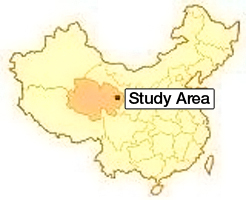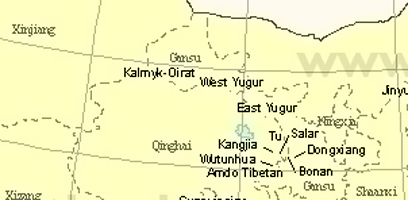Interactive Inner Asia Project
The project aims to provide a model lexicographic, demographic, and grammatical feature infrastructure, giving users tools to explore Inner Asia, its individual languages, and their contact and change. The convergence of unrelated languages in Inner Asia is as striking as that of the Balkans, yet the features of the area’s languages have hardly been compared. The area remains largely undocumented as a Sprachbund. Since most of the relevant Inner Asian languages are endangered, we have a narrow temporal opportunity in which to understand these interactions, in order to contribute to typological and contact theory.
Inner Asia—bounded by the Himalayas to the south, Mongolia to the north, the Pamirs to the west, and the Ordos Plain of north-central China to the east—is a vast area of four million square kilometers, which supported a large number of ancient civilizations, including early Indo-European, Turkic, and Sino-Tibetan peoples. Inner Asia has a number of geographic sub-regions, one of which is this project’s focus: the upper Yellow River littoral area, now in Haidong prefecture of Qinghai province, China. The river and its tributaries have sustained relatively large numbers of sedentary agriculturalists. This area was chosen since it shows the most convergence between unrelated languages and is where P.I. Dwyer has conducted 20 years of documentation
| Inner Asia. (Map Source: http://www.indiana.edu/~rifias) |
 |
The project focuses on seven languages in one part of Inner Asia: the upper Yellow River littoral area. The focus languages include five endangered languages - Salar (ISO 639-3:slr, Turkic), Baonan (peh) and SE Monguor (mjg, Mongolic), Wutun (wuh, Mandarin-Tibetan creole), and Kangjia (kxs, Mongolic-Sinitic) - and two areally dominant languages, Northwestern Mandarin (cmn) and Amdo Tibetan (adx). This website will provide descriptive pages and typological analysis for these languages. The focus languages are key to understanding historical developments in Turkic and Mongolic, and they preserve a number of archaisms. The languages are also important for understanding language contact processes, by comparing convergent and divergent processes with demographic, sociocultural, ecological, and typological data.
| Current Study Area. |
 |
Objectives
The project has two interrelated objectives: to produce a database-backed website on the Inner Asian Sprachbund languages, and an etymological dictionary of the Salar language. The website will be a major online resource of a linguistic area, containing grammatical sketches, maps, comprehensive comparative lexical and grammatical features databases, and a discussion wiki. This website will also provide some descriptive information on of the broader Inner Asian region of Inner Mongolia, Chinese Turkestan, and Tibet.
Later phases include expanding the collaboration to include many more Inner Asian scholars, and to expand the database to include other endangered Inner Asian Mongolic (N Monguor (Tu) [mjg], Baonan [peh], Dongxiang [sce]), Shera “East” Yugur [yuy]) and Turkic languages (Sarig “West” Yugur [ybe]); other (semi-)dominant languages, Uyghur [uig], then Kazakh and Kyrgyz.
Current and future focus languages. (Map Source: Lewis 2009) |
 |
